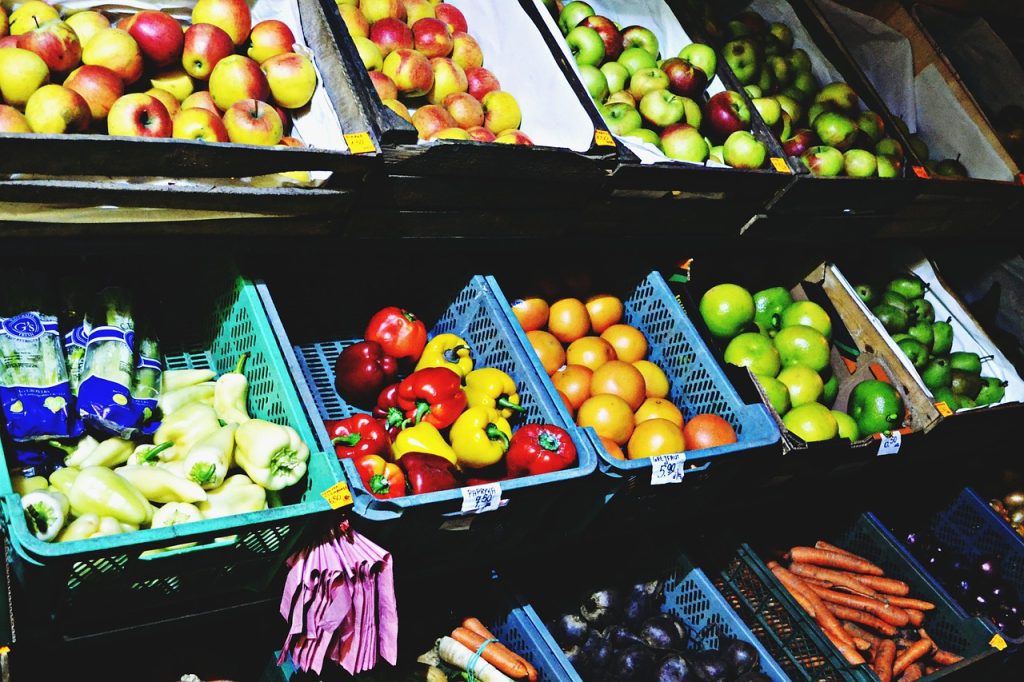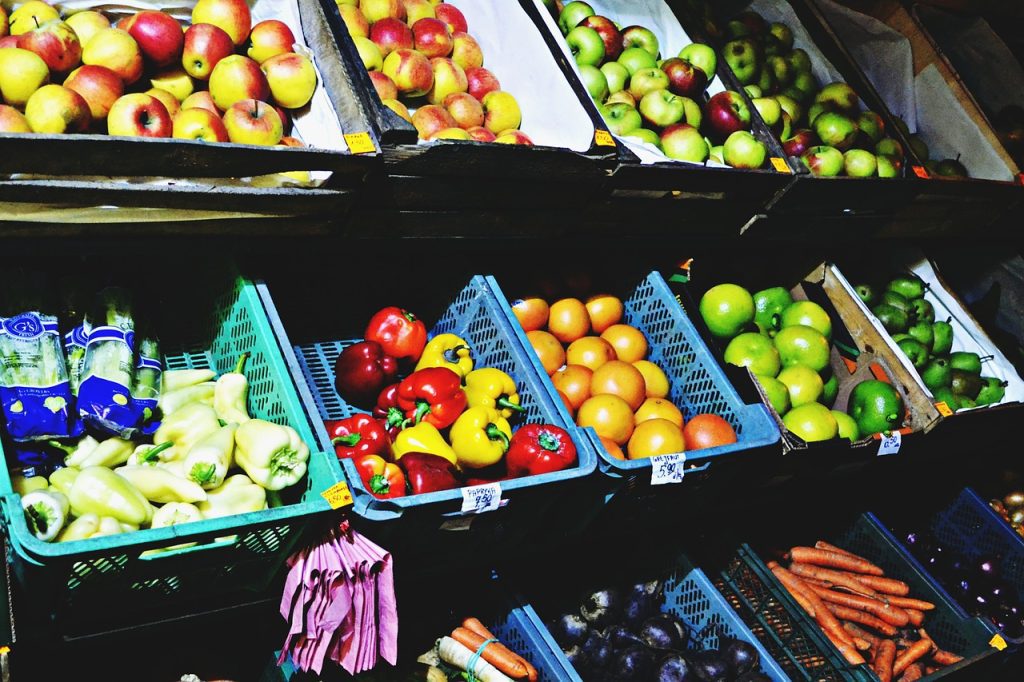
Table of Contents
How to Save Money on Groceries Every Month: A Realistic, Proven Guide
Introduction:
How to Save Money on Groceries Every Month: Grocery bills are one of the few recurring expenses that hit every household—whether you’re single, part of a big family, or living with roommates. And if you’ve found yourself shocked by the checkout total more than once lately, you’re not alone. Food prices have been creeping up, and unless you’re planning on skipping meals (not recommended!), learning how to save money on groceries is becoming more important than ever.
The good news? With a few changes to your habits, some smart planning, and a little creativity, you can shave a significant amount off your grocery bill—month after month.
This comprehensive guide will walk you through real, practical ways to save money on groceries without sacrificing quality or taste. No extreme couponing, no starving yourself, and no bland meals. Just smart, sustainable strategies that actually work.

Why Your Grocery Bill Keeps Climbing
Before diving into the tips, it helps to understand why groceries have become more expensive in the first place.
- Inflation: Food prices rise with inflation, and recent years have seen higher-than-average increases.
- Supply chain disruptions: Weather events, global issues, and transportation delays can all drive up prices.
- Convenience buying: Many people are spending more by choosing pre-packaged, pre-cut, or ready-made items.
While you can’t control global economics, you can control your habits—and that’s where the savings come in.
1. Start with a Realistic Grocery Budget
The first step to saving money on groceries is knowing how much you’re actually spending—and how much you should be spending.
How to Set a Grocery Budget:
- Track your current spending for a full month. Keep your receipts or use a budgeting app.
- Break it down weekly to stay on track.
- Use guidelines, not comparisons. What works for a family of four won’t work for a single person.
As a rule of thumb, many financial advisors suggest allocating around 10–15% of your monthly income to food (including dining out). But every household is different. Start with where you are and aim to reduce it gradually.
2. Plan Your Meals Like a Pro
Meal planning is hands-down one of the most effective ways to save money on groceries. It eliminates impulse buys and reduces food waste—two of the biggest money drains.
Meal Planning Tips That Actually Work:
- Plan meals around what’s on sale.
- Shop your pantry first. Use up what you already have before buying more.
- Choose versatile ingredients. Think rice, beans, eggs, chicken, frozen vegetables, and pasta.
- Stick to simple meals. You don’t need to be a chef to cook delicious food.
Set aside 15–30 minutes once a week to write out meals for the week. Even a loose plan helps you stay focused and spend less.
3. Make a Grocery List—and Stick to It
This sounds basic, but it’s a game-changer. Going into the store without a list is like shopping blindfolded. You’ll likely end up buying duplicates, forget essentials, and overspend on impulse items.
List-Making Strategies:
- Categorize your list by section (produce, dairy, pantry, etc.) to save time.
- Include only what you need for that week’s meals.
- Use digital tools or old-school pen and paper. Whatever helps you stay consistent.
Avoid the “just in case” mindset. If you don’t need it this week, skip it.

4. Shop Once a Week (or Less)
Frequent trips to the store usually lead to unnecessary spending. Every time you walk through those aisles, you’re exposing yourself to temptation.
Try This:
- Pick one day a week to shop.
- If you forget something, ask yourself if it can wait until the next trip.
- Use your freezer and pantry to get creative when you’re missing ingredients.
Cutting back from 2–3 trips a week to just one can save you hundreds over the course of a year.
5. Never Shop Hungry
This is a classic tip for a reason: shopping on an empty stomach makes everything look delicious. That’s a recipe for impulse buys.
Eat a snack or a small meal before heading to the store. You’ll make more rational choices, guaranteed.
6. Buy Generic Brands
Brand loyalty can be costly. Most store brands or generics offer the same quality at a significantly lower price.
Key Areas Where Generics Shine:
- Pantry staples (flour, sugar, rice)
- Canned goods
- Dairy products
- Cleaning supplies
Do a taste test. In many cases, you won’t notice the difference—but your wallet will.
7. Learn the Sales Cycles
Grocery stores operate on predictable sales cycles, often rotating specials every 6–8 weeks. Learning when your favorite items go on sale lets you plan ahead and stock up wisely.
Tips:
- Pay attention to weekly flyers or circulars.
- Keep a price book (a simple notebook or app) to track regular and sale prices.
- Stock up on non-perishables when they hit their lowest price.
Buying at the right time is just as important as what you buy.

8. Use Your Freezer Strategically
Your freezer is your best friend when it comes to cutting grocery costs. It lets you buy in bulk, extend shelf life, and reduce food waste.
What to Freeze:
- Meat and poultry bought on sale
- Cooked meals for busy nights
- Bread, tortillas, berries, herbs, and even milk
Batch cooking and freezing meals can save time and money while reducing the temptation to order takeout.
9. Cook at Home More Often
Eating out (even casually) can quietly wreck your grocery budget. A $12 lunch here, a $25 dinner there—it adds up fast.
Ways to Make Home Cooking Easier:
- Keep your pantry stocked with essentials.
- Prep ingredients ahead of time.
- Embrace one-pot meals and slow cooker recipes.
Even replacing just 1–2 takeout meals per week with homemade alternatives can save you $100–$300 monthly.
10. Use Leftovers Creatively
Food waste is money waste. Instead of tossing leftovers, find ways to transform them into new meals.
Ideas for Repurposing Leftovers:
- Roast chicken becomes tacos, sandwiches, or soup.
- Leftover veggies can be turned into stir-fry or omelets.
- Rice or pasta can be used in casseroles or fried rice.
Get creative. The less food you waste, the more you save.
11. Buy in Bulk (When It Makes Sense)
Buying in bulk can save you a lot—if you use what you buy. Focus on items with a long shelf life.
Bulk-Buying Best Bets:
- Rice, beans, pasta
- Canned goods
- Toilet paper, paper towels
- Frozen fruits and vegetables
Avoid buying large quantities of perishable items unless you know you can freeze or use them in time.
12. Shop at Discount and Warehouse Stores
Not all grocery stores are created equal. Discount retailers, warehouse clubs, and international markets can offer big savings—if you’re strategic.
Best Practices:
- Compare unit prices between stores.
- Use warehouse clubs for staples, not snacks.
- Shop at ethnic markets for spices, rice, and produce at lower prices.
Don’t be afraid to shop around. A few extra minutes of comparison can mean major savings.
13. Use Coupons and Cashback—Wisely
Coupons aren’t just for extreme savers. Used smartly, they can stretch your budget without overwhelming your brain.
Easy Wins:
- Use digital coupons from your grocery store app.
- Take advantage of cashback apps that give you money for items you already buy.
- Combine sales with coupons for maximum savings.
Don’t let couponing become a time-consuming obsession. Focus on high-value, relevant deals.
14. Stick to Seasonal Produce
Produce that’s in season is usually cheaper, fresher, and more flavorful. Out-of-season fruits and veggies are often imported and come with a markup.
Seasonal Buying Tips:
- Learn what’s in season in your area each month.
- Freeze or preserve seasonal produce when it’s at peak value.
- Visit local farmers markets near closing time for possible markdowns.
Seasonal eating is budget-friendly and healthy.
15. Avoid Pre-Cut and Pre-Packaged Foods
Convenience comes at a cost. Pre-cut fruits, bagged salads, shredded cheese, and meal kits may save time but they often double or triple the price.
Instead, buy whole ingredients and do the prep yourself. It only takes a few extra minutes and the savings add up fast.
16. Reduce Meat (But Not Protein)
Meat is usually the most expensive item on your grocery list. Cutting back—just a little—can make a noticeable dent in your bill.
Budget-Friendly Protein Alternatives:
- Beans, lentils, tofu
- Eggs
- Canned fish (like tuna or salmon)
- Peanut butter
You don’t have to go vegetarian, but even one meatless meal a week can save money and boost your health.
17. Limit Junk Food and Sugary Drinks
Chips, soda, cookies, and packaged snacks are not only unhealthy—they’re pricey. They also disappear quickly and leave you hungry again.
Focus on whole, filling foods and treat snacky items as occasional indulgences rather than staples.
18. Keep an Organized Pantry and Fridge
Ever found a moldy cucumber or expired yogurt in the back of your fridge? That’s money in the trash.
Organization Tips:
- Rotate items (first in, first out).
- Use clear containers to see what you have.
- Label leftovers with dates.
Knowing what you already have helps avoid overbuying and keeps your food fresh longer.
19. Grow Your Own Herbs or Veggies
Even if you don’t have a backyard, a small windowsill garden can save you money on fresh herbs and a few vegetables.
Easy-to-Grow Choices:
- Basil, mint, parsley
- Green onions
- Lettuce, spinach
Fresh herbs can cost $2–$4 per bunch at the store. Growing your own pays for itself in just a couple of weeks.
20. Say No to the Gimmicks
Stores are designed to make you spend more. From music tempo to shelf placement, everything is engineered for impulse buying.
Stay alert:
- Don’t be tempted by checkout lane snacks.
- Avoid “BOGO” deals unless you truly need both items.
- Walk past flashy displays unless it’s on your list.
Stick to your plan, and you’ll avoid the traps.
Final Thoughts: Small Changes, Big Results
Saving money on groceries isn’t about sacrificing your lifestyle—it’s about being more intentional. You don’t have to do everything on this list to see results. Start with a few changes that feel manageable, and build from there.
Over time, your new habits will become second nature, and you’ll see your grocery bill shrink—without compromising the quality of your meals or your health.
Remember: it’s not about being perfect, it’s about being progressive. One smart choice at a time.
✅ Frequently Asked Questions on How to Save Money on Groceries
1. What is the best way to save money on groceries?
Meal planning, shopping with a list, and avoiding impulse purchases are three of the most effective ways to save money on groceries consistently.
2. How much should I spend on groceries per month?
A general guideline is 10–15% of your monthly income, but it varies depending on household size, dietary needs, and location.
3. Is meal planning really worth it?
Yes! Meal planning helps you avoid unnecessary purchases, reduces waste, and makes grocery shopping more efficient.
4. How often should I grocery shop to save money?
Once a week or less is ideal. Frequent trips usually lead to impulse spending.
5. Does buying in bulk really save money?
It can—especially for non-perishable staples like rice, beans, and pasta. Just be sure you’ll use everything before it expires.
6. Is it cheaper to cook at home or eat out?
Cooking at home is almost always cheaper and healthier than dining out, especially for families.
7. Should I shop at more than one store?
If you have time, yes. Different stores offer better deals on specific items, and rotating stores based on sales can save you money.
8. Are generic or store-brand products worth it?
Absolutely. Most store brands are just as good as name brands and cost significantly less.
9. How can I reduce my grocery bill without coupons?
Focus on meal planning, buying seasonal produce, using a shopping list, and avoiding packaged or convenience foods.
10. Is couponing still worth the time?
Digital coupons and cashback apps make it easy and worthwhile for items you already plan to buy. Extreme couponing isn’t necessary.
11. How do I avoid impulse buying at the grocery store?
Eat before shopping, stick to a list, and limit distractions like browsing new aisles or shopping with kids.
12. Does using a grocery list actually save money?
Yes, it keeps you focused and prevents you from buying unnecessary items.
13. Can shopping online save money on groceries?
Yes. Online shopping helps avoid impulse buys, and some services offer exclusive discounts or coupons.
14. What are the cheapest protein sources?
Eggs, lentils, beans, canned tuna, and peanut butter are affordable and nutritious protein sources.
15. Is frozen produce cheaper than fresh?
Often, yes—especially when the produce is out of season. It also lasts longer and reduces waste.
16. Should I stop buying snacks and drinks to save money?
Cutting back on packaged snacks and sugary drinks can significantly reduce your grocery bill.
17. How can I avoid food waste at home?
Store food properly, label leftovers, plan meals with perishable items first, and get creative with leftovers.
18. Is it cheaper to buy groceries weekly or monthly?
Weekly shopping usually works best—it helps you avoid spoilage and stay flexible with deals.
19. Are meal kits good for saving money?
They’re convenient but typically more expensive than cooking from scratch.
20. What should I always have in my pantry to save money?
Staples like rice, pasta, beans, canned tomatoes, oats, and spices help you build meals cheaply.
21. How do I know if a sale is really a good deal?
Keep a price book or compare unit prices to know what’s actually a deal and what’s just marketing.
22. What’s the most expensive part of a grocery bill?
Meat, dairy, and pre-packaged convenience items usually account for the highest costs.
23. Is organic food always more expensive?
Often, yes. But buying organic selectively (like the “Dirty Dozen” items) can balance health and budget.
24. Can freezer meals save money?
Definitely. Prepping freezer meals in bulk reduces reliance on takeout and minimizes waste.
25. Is shopping at farmers markets cheaper?
Sometimes. Local produce can be cheaper in season, especially near closing time when vendors may offer discounts.
26. What are some quick meals that are budget-friendly?
Stir-fry, pasta with sauce, rice and beans, omelets, and chili are fast, cheap, and filling options.
27. How do I stick to my grocery budget?
Track spending weekly, use a list, avoid impulse items, and adjust your plan as needed.
28. Are cashback apps worth it for grocery shopping?
Yes—many users save $10–$50/month using apps that give cashback on everyday purchases.
29. What’s the best day of the week to grocery shop?
Mid-week (Tuesday or Wednesday) often has fewer crowds and fresher stock after new sales start.
30. How can I involve my kids in grocery budgeting?
Make it fun—teach them to compare prices, look for deals, or pick one affordable treat within budget.
31. Can reducing meat help lower grocery bills?
Yes. Incorporating more plant-based meals is a healthy and cost-effective strategy.
32. What’s the best way to store food to make it last longer?
Use airtight containers, learn where to store different foods (e.g., onions vs. potatoes), and label leftovers.
33. Does organizing my kitchen help save money?
Yes. Knowing what you have prevents waste and duplicate purchases.
34. Should I use cash to stick to my grocery budget?
Using cash or a prepaid card can help you stay accountable and avoid overspending.
35. What’s the biggest mistake people make when trying to save on groceries?
Not having a plan. Walking into the store without a list or meal ideas is the fastest way to overspend.
Also visit:-



